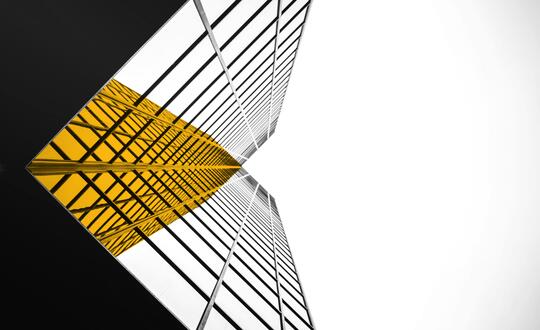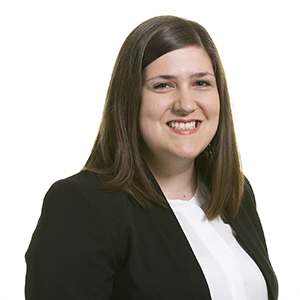
The Supreme Court has issued its long awaited decision on Sky v SkyKick. The case mainly revolved around whether a trade mark registration can be invalidated in whole or in part on the basis that the application was made in bad faith because the applicant did not, at the time of application, have a genuine intention to use the mark in relation to some or all of the goods and services listed.
…And the answer is yes it can but only in relation to those goods and services for which the applicant has been found to have had no intention to use. This means going forward brand owners (and legal advisers alike) must give more consideration to the goods and services listed in the trade mark applications to reduce the risk of similar pitfalls.
It is worth noting that the case had been settled between the parties before the judgment (and a request filed to withdraw the appeal) but given the importance of the matters it raised, the Supreme Court (the Court) decided to proceed with a decision. Commendably, the Court went as far as to refuse a request to limit the decision to "what would be in effect, some kind of advisory opinion" out of fear of creating uncertainty.
Background
This case dates back to 2016 when Sky (Sky plc, Sky International AG and Sky UK Ltd) brought an infringement action regarding four EU trade marks and one UK trade mark against "SkyKick" (together SkyKick UK Ltd and SkyKick Inc). Sky alleged that use of 'SkyKick' for cloud services infringed its earlier trade mark rights. The High Court presided and sought guidance from the CJEU (Court of Justice of the European Union) before issuing its final decision. As a counterclaim to the infringement action, SkyKick sought to invalidate Sky's applications on the grounds of:
- Insufficient clarity and precision of Sky's goods and services in class 9 and 38, including "computer software" and other similar terms.
- Bad faith because Sky had no intention to use the marks on all its goods and services.
With CJEU guidance, the High Court decided that in relation to (1) invalidation on the basis of a lack of precision and clarity was not possible. As for (2) the Court found that in three specific ways Sky had demonstrated bad faith, which were:
- where it had no intention to use the trade marks at all (e.g. 'bleaching preparations' and 'whips')
- where the category was so broad that Sky could not, and did not, intend to use the trade mark across the full breadth of the category
- where the specifications were intended to cover all the goods or services in a relevant class.
In the High Court's view, Sky intended to obtain rights "purely as a legal weapon against other parties". The Court then turned to bad faith in relation to the goods and services that Sky was relying on in the infringement action, namely its Selected Goods and Services in class 9 and 38[1]. It decided that in these precise circumstances all were to be limited.
Sky appealed to the Court of Appeal (the CoA), which reversed the High Court's decision on these points stating that "it is true that Sky had no prospect of using the mark in relation to every conceivable sub-division of computer software" but this alone was not a "relevant or objective indication of bad faith". Additionally, the CoA stated that Sky, which operates significantly in computer software has an "obvious commercial justification" for including the term computer software in its list of goods and services. They further supported this decision by stating that "an applicant for a trade mark does not have to formulate a commercial strategy for using the mark in relation to every species of goods or services falling within a general description…."
Supreme Court decision
SkyKick appealed the decision to the the Court asking that Sky's registrations be declared invalid on the basis that each application was made in bad faith in respect of each of Sky's Selected Goods and Services save for "telecommunications" and "electronic mail services" or, alternatively to order that the specification be amended in the manner they had initially requested at the High Court.
The Supreme Court identified a number of points to consider, including:
- Whether a finding of bad faith would only affect those specific goods (for which the applicant had no intention to use) or whether it should render the whole application invalid; and
- How the use of class headings or other general descriptions of goods and services is to be approached.
To point (1), the Court agreed with the decision of the High Court, stating that "the judge was entitled to find that the applications were made in bad faith in the way that he did, and to require the modification of the eight categories of Selected Goods and Services in the manner set out in his judgment" meaning that any finding of bad faith would be limited to those goods and services for which intention to use was not found. While this results in a limitation of the application, it seems a reasonable approach that accepts that both good and bad faith can exist in one application.
While acknowledging the need to give brand owners leeway to future proof their trade marks, the Court also sought to balance this with the need to ensure the trade mark system is not left open to abuse e.g. by allowing applicants to effectively block other users from using a similar trade mark even for goods and services they themselves would never sell/offer.
To point (2), the Court reiterated that there is "no expectation that an applicant has a commercial strategy to use the mark for every possible species of goods and services it listed, nor is it an objection that the applicant has applied for a wide range of goods and services using general terms. However where the broad/general descriptions include distinct sub-categories such as computer programs or computer services it is possible that an applicant will be deemed as having acted in bad faith in relation to one of those." The Court considered it unjust that in those circumstances an applicant could escape the consequences by hiding behind having used general terminology. Of course the decision would be a matter of evidence and bad faith would not be automatically inferred from the terminology in the application alone.
Some takeaways
Futureproofing v bad faith
There are implications for brand owners and legal advisers alike. They will both need to give more consideration to the goods and services listed in trade mark applications to reduce the risk of invalidity actions (or to be in a position to defend them successfully). A balance will need to be struck between leaving room for brand expansion and taking action that may be interpreted as bad faith.
The good news is that throughout the different iterations of this case, there is agreement that applicants should be allowed to futureproof their applications; however, there is also recognition that there is a line to be observed if we are to keep the trade mark system functioning for its intended purpose.
Context is key
It is clear from this case and those that precede it that a decision on bad faith will take context into consideration. In reaching its decision, the Court took wider context into account, in particular that in Sky's original claim it had relied on all goods and services but progressively narrowed these throughout the proceedings, only settling on the Selected Goods and Services in its closing submissions. All of which the Court viewed as supporting the claim that Sky had applied for goods/services they had no intention of selling/providing. So, legal advisers and brand owners will need to give consideration to this when formulating filing or dispute strategies. To aid with this, brand owners are encouraged to keep records of plans, whether these come to fruition or not, as these records could be the difference between a winning case and a losing one.
Conclusion
The threshold for proving bad faith is still quite high and the burden of proof still lies with the party making the claim. Arguably, the current state of affairs may well favour big brand owners who could more convincingly argue that their overly broad specification represents their future plans. In recent years a number of large companies have diversified their businesses into areas that may not have been reasonably foreseeable based on their initial business offering; for example, Uber expanding into food and drink, and JD Sports and Footasylum both entering the entertainment sphere (producing TV/Internet shows).
Overall this decision leaves us in a position where broad specifications are still acceptable and brand owners will welcome this. However, we expect over the years more discussions will arise around whether it is necessary for the UK to require more specific terminology in the same vein as the US trade mark office; particularly in relation to terms such as 'computer software' which is an umbrella term for a plethora of goods and services that are arguably not similar in their nature, purpose or even method of use.
__________
Sky relied on eight categories, namely, in class 9: computer software; computer software supplied from the internet; computer software and telecoms apparatus to enable connection to databases and the internet; data storage; and, in class 38: telecommunications services; electronic mail services; internet portal services; and computer services for accessing and retrieving information/data via a computer or computer network (the "Selected Goods and Services")
This article is for general information only and reflects the position at the date of publication. It does not constitute legal advice.






